
Mobility training programs are comprehensive approaches to enhancing flexibility and range of motion, essential for overall fitness and injury prevention. They often include structured PDF guides offering expert-designed routines.
1.1 Overview of Mobility Training
Mobility training focuses on improving joint range, flexibility, and movement quality. It combines dynamic and static stretches, along with functional exercises, to enhance physical performance and reduce injury risk. Structured programs, often detailed in PDF guides, provide step-by-step routines for both beginners and advanced individuals. These plans typically include 12-week timelines, targeting upper and lower body areas. Exercises like shoulder mobilizations, hip flexor stretches, and thoracic spine movements are common. The goal is to create a balanced approach that improves daily movement and athletic performance, supported by resources like video tutorials and downloadable worksheets for easy reference.
1.2 Importance of Mobility in Fitness
Mobility is a cornerstone of fitness, enhancing movement efficiency and reducing injury risk. It improves joint health, allowing for better performance in exercises and sports. By incorporating mobility training, individuals can maintain flexibility, strength, and posture. Regular practice supports long-term physical well-being, making it essential for athletes and non-athletes alike. Structured programs, often outlined in PDF guides, provide accessible routines to integrate mobility into daily workouts, ensuring sustainable progress and overall fitness goals.
1.3 Benefits of a Structured Mobility Program
A structured mobility program offers numerous benefits, including improved flexibility, enhanced movement quality, and reduced injury risk. It promotes better posture, balance, and overall physical performance. By following a well-designed plan, individuals can address specific areas of tightness and weakness, leading to more efficient workouts. Such programs often include progressive exercises, ensuring continuous improvement over time. They also provide a clear roadmap, helping users stay consistent and motivated. With structured guidance, individuals can achieve sustainable mobility gains, supporting long-term health and fitness goals effectively.
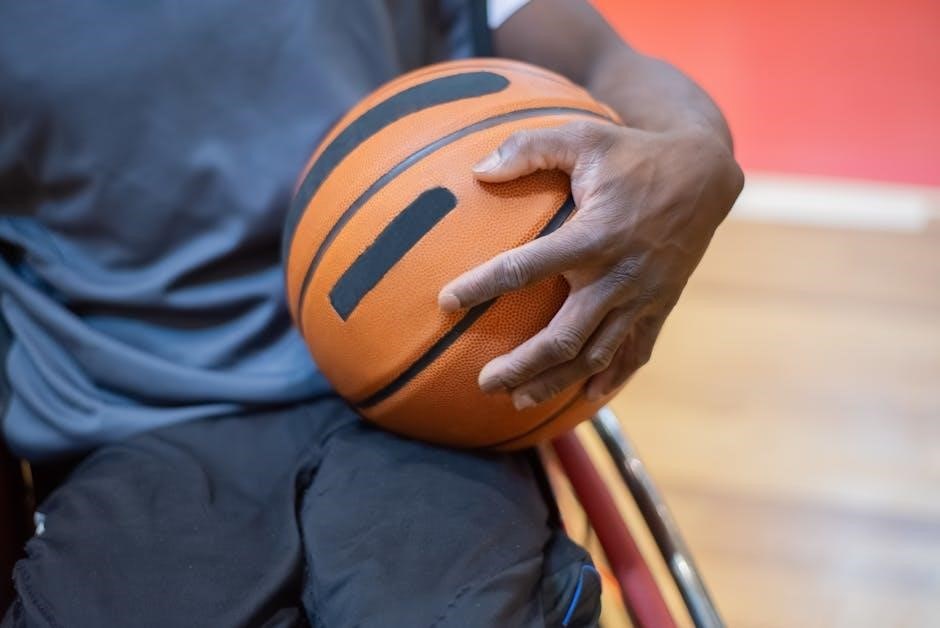
Structure of a 12-Week Mobility Training Program
A 12-week mobility program is designed to progressively enhance flexibility and movement quality. It includes weekly schedules, targeted exercises, and a clear plan for consistent improvement over time.
2.1 Weekly Workout Schedules
A well-structured 12-week mobility program includes detailed weekly schedules, ensuring consistent progress. Each week focuses on specific areas, such as upper body, lower body, and active recovery. Workouts are balanced to avoid overtraining, with rest days incorporated for optimal recovery. The schedule progresses gradually, introducing more advanced exercises as mobility improves. Warm-up routines and cool-down stretches are emphasized to enhance flexibility and prevent injury. By following the weekly plan, individuals can systematically improve their range of motion and overall movement quality, setting a strong foundation for long-term mobility.
2.2 Progressive Exercise Planning
Progressive exercise planning ensures a gradual increase in difficulty, allowing individuals to build mobility systematically. Each phase introduces more challenging movements, starting with basic stretches and advancing to dynamic drills. For example, week one might focus on knee bends and ceiling punches, while week six could include thread-the-needle maneuvers. This structured approach helps improve flexibility, strength, and joint stability without overloading the body. The exercises are carefully selected to target specific muscle groups and joints, ensuring balanced development and preventing plateaus. This method fosters long-term mobility improvements and enhances overall physical performance.
2.3 Incorporating Dynamic and Static Stretches
Mobility programs often blend dynamic and static stretches to maximize flexibility. Dynamic stretches, like arm circles and leg swings, prepare the body for movement by increasing blood flow and range of motion. Static stretches, such as hamstring or shoulder stretches, are held longer to lengthen muscles and improve joint mobility. Combining these methods ensures a balanced approach, enhancing both active and passive flexibility. Many PDF guides recommend performing dynamic stretches before workouts and static stretches afterward to promote recovery and long-term mobility improvements. This dual approach supports overall physical performance and injury prevention. Consistency is key for optimal results.
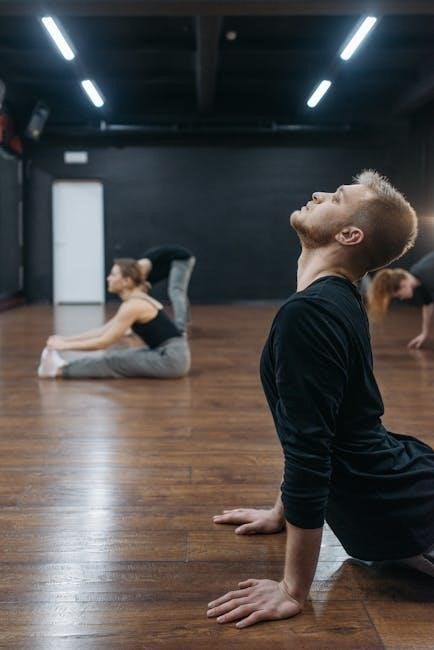
Upper Body Mobility Exercises
Upper body mobility exercises focus on improving shoulder, thoracic spine, and arm flexibility. Techniques like thread-the-needle and arm circles enhance range of motion and posture, reducing stiffness.
3.1 Shoulder Mobility Exercises
Shoulder mobility exercises are essential for improving flexibility and strength in the shoulder complex. Techniques like thread-the-needle, arm circles, and wall slides target the shoulders and thoracic spine. These exercises help enhance range of motion, reduce stiffness, and improve posture. Regular practice, 3-5 times weekly, can prevent injuries and enhance athletic performance. Dynamic movements, such as overhead reaches and lateral raises, are also effective. Incorporating these exercises into a daily or weekly routine promotes long-term shoulder health and overall upper body mobility, making them a cornerstone of any mobility training program.
3.2 Thoracic Spine Mobility Techniques
Thoracic spine mobility techniques focus on improving flexibility and movement in the upper back. Exercises like cat-cow stretches, thoracic rotations, and wall-assisted mobility drills are effective. These movements help reduce stiffness, enhance posture, and improve breathing. Regular practice, 3-5 times weekly, can significantly boost spinal flexibility. Dynamic stretches and foam rolling are also recommended to complement these techniques. Incorporating thoracic spine mobility into a daily routine promotes better overall movement quality and reduces the risk of injury, making it a key component of any comprehensive mobility training program.
3.4 Advanced Upper Body Stretches
Advanced upper body stretches target the shoulders, chest, and scapular regions for enhanced flexibility and range of motion. Techniques like thread-the-needle and scapular wall slides are effective. These exercises improve posture, reduce shoulder tension, and enhance athletic performance. Incorporating dynamic stretches, such as overhead reaches and rotational movements, can further optimize mobility. Regular practice, 3-5 times weekly, is recommended to achieve long-term benefits. These advanced stretches complement foundational mobility routines, ensuring comprehensive upper body flexibility and functional movement quality.

Lower Body Mobility Exercises
Lower body mobility exercises focus on hips, knees, and ankles, enhancing flexibility and strength. Techniques like knee bends, hip flexor stretches, and hamstring exercises improve movement quality and reduce stiffness.
4.1 Hip Flexor and Glute Activation
Hip flexor and glute activation exercises are essential for improving lower body mobility. Techniques like lunges, glute bridges, and hip thrusts strengthen these muscles, enhancing movement efficiency. Dynamic stretches, such as leg swings and lateral lunges, increase flexibility and range of motion. These exercises also improve balance and reduce the risk of injuries. Incorporating activation drills into your routine can enhance athletic performance and daily mobility. Many PDF guides provide detailed routines, emphasizing proper form and progression. Regular practice ensures optimal activation and flexibility in the hip and glute regions, promoting overall lower body health and functionality.
4.2 Knee and Ankle Mobility Drills
Knee and ankle mobility drills are crucial for maintaining healthy joints and improving movement efficiency. Exercises like knee bends, heel slides, and calf raises target these areas, enhancing flexibility and strength. Dynamic stretches, such as leg swings and ankle circles, promote joint lubrication and range of motion. These drills reduce injury risk and improve athletic performance. PDF guides often include step-by-step routines, focusing on progressive exercises to enhance mobility. Consistent practice helps maintain joint health and supports overall lower body functionality, ensuring optimal movement and stability in daily activities and sports.
4.3 Improving Flexibility in the Hamstrings
Improving hamstring flexibility is essential for better posture, movement efficiency, and injury prevention. Exercises like standing hamstring stretches and seated forward folds target tight muscles. Dynamic movements, such as leg swings and lunges, enhance range of motion. Incorporating these drills 3-5 times weekly promotes lasting flexibility. A 12-week mobility program often includes progressive stretches to address hamstrings. Proper form and consistent practice are key to achieving optimal results. PDF guides provide detailed routines and visual aids, ensuring effective implementation of these exercises for improved hamstring health and overall lower body mobility.
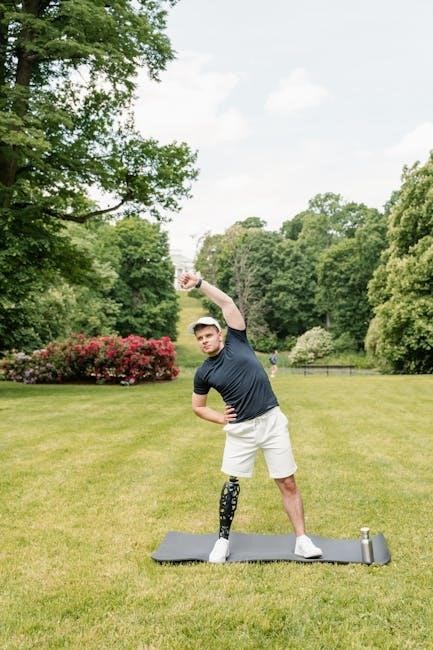
Core and Spinal Mobility
Core and spinal mobility is crucial for maintaining proper posture, reducing back pain, and enhancing overall movement. Exercises like pelvic tilts and cat-cow stretches improve spinal flexibility, while bird dogs strengthen the core. Regular practice promotes better alignment and reduces injury risk, making it a cornerstone of any mobility training program. PDF guides often include detailed routines to target these areas effectively, ensuring long-term spinal health and stability.
5.1 Pelvic and Lumbar Spine Exercises
Pelvic and lumbar spine exercises are foundational for improving lower back mobility and reducing stiffness. Techniques like pelvic tilts and cat-cow stretches enhance spinal flexibility, while bird dogs strengthen stabilizing muscles. These exercises promote proper posture, alleviate back pain, and improve movement quality. PDF guides often detail these routines, emphasizing controlled movements and breath synchronization. Regular practice enhances core stability, preventing injuries and improving overall spinal health. Incorporating these exercises into a mobility program ensures better alignment and long-term spinal resilience, making them essential for both athletes and individuals seeking improved physical wellbeing.
5.2 Core Strengthening for Better Mobility
Core strengthening is essential for enhancing mobility, as it provides the stability needed for effective movement. Exercises like planks, bird dogs, and Superman stretches target abdominal and lower back muscles, improving posture and balance. A strong core enhances spinal stability, reducing the risk of injuries and improving overall mobility. PDF guides often include these exercises, emphasizing proper form and progression. Regular core work complements spinal mobility exercises, promoting better movement patterns and long-term spinal health. Incorporating these exercises into your routine ensures a balanced approach to mobility training, fostering both strength and flexibility.
5.3 Functional Movements for Spinal Health
Functional movements are essential for spinal health, focusing on exercises that mimic daily activities and improve mobility. Cat-cow stretches, bird dogs, and spinal twists are common techniques to enhance spinal flexibility and stability. These movements strengthen the muscles surrounding the spine, reducing the risk of injury and improving posture. PDF guides often include step-by-step instructions for these exercises, emphasizing proper form and progression. Regular practice promotes better spinal alignment, reduces stiffness, and enhances overall mobility, making them a cornerstone of effective mobility training programs.
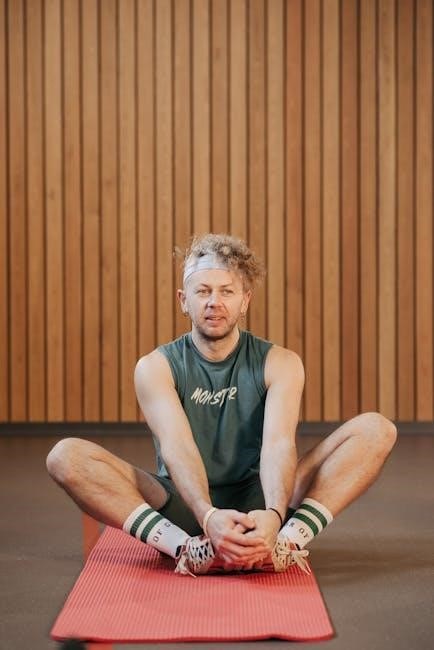
Enhancing Your Mobility Program
Mobility training program PDFs often include tips for enhancement, such as dynamic warm-ups, proper nutrition, and recovery techniques to maximize results and improve overall flexibility and strength.
6.1 Warm-Up and Cool-Down Routines
Effective warm-up and cool-down routines are essential for enhancing mobility programs. Start with dynamic stretches like arm circles, leg swings, and torso twists to prepare muscles for movement. Incorporate light cardio such as jogging in place or cycling to increase blood flow. Post-workout, focus on static stretches like hamstring and shoulder stretches to improve flexibility and reduce muscle tension. Many PDF guides recommend dedicating 5-10 minutes to these routines, ensuring a smooth transition into and out of intense training. Consistency in these practices promotes better mobility and reduces injury risk, making them a cornerstone of any successful program.
6.2 Nutrition and Recovery Tips
Nutrition plays a vital role in supporting mobility training. A balanced diet rich in lean proteins, omega-3 fatty acids, and antioxidants aids in muscle recovery and joint health. Stay hydrated to maintain lubrication in joints and promote flexibility. Supplements like turmeric and glucosamine can reduce inflammation and support connective tissues. Recovery techniques such as foam rolling, massage, and rest days are equally important. Many PDF guides emphasize the importance of proper nutrition and recovery to maximize mobility gains and prevent overtraining. Prioritizing these practices ensures sustained progress and overall well-being in any mobility program.
6.3 Mind-Body Practices for Flexibility
Mind-body practices, such as yoga and Pilates, enhance flexibility by combining mental focus with physical movement. These exercises improve range of motion and reduce stiffness. Techniques like controlled breathing and dynamic stretches promote relaxation and muscle release. Many PDF guides include routines that integrate these practices, offering structured plans for daily practice. Consistency is key, as regular mind-body exercises improve joint mobility and overall well-being. These practices complement traditional mobility training by fostering a deeper connection between mind and body, leading to better flexibility and reduced injury risk over time.

Progression and Adaptation
Mobility training programs often include structured plans that guide progression through various phases, ensuring continuous improvement in flexibility and range of motion over time.
7.1 Adjusting Exercises for Different Fitness Levels
Mobility training programs can be tailored to suit various fitness levels by modifying exercises. Beginners may start with gentle stretches and basic mobilizations, while intermediates can incorporate dynamic movements and resistance bands. Advanced individuals can progress to plyometric exercises and complex movement flows. Adjustments may include changing the range of motion, intensity, or duration. For example, a shoulder mobility drill can be simplified by reducing the arm’s overhead reach or intensified by adding weighted resistance; These modifications ensure that the program remains challenging yet safe for all participants, fostering continuous improvement without risking injury. Proper progression enhances flexibility and strength effectively.
7.2 Tracking Progress and Setting Goals
Tracking progress in a mobility training program is essential to stay motivated and ensure continuous improvement. Participants can use worksheets or mobile apps to log exercises, note improvements, and set achievable goals. Weekly or bi-weekly assessments of range of motion, flexibility, and movement quality help measure progress. Setting specific, measurable, and time-bound goals, such as increasing shoulder mobility or improving squat depth, keeps the program focused. Celebrating small milestones enhances motivation and encourages long-term commitment to the program.
7.3 Avoiding Plateaus in Mobility Training
Plateaus in mobility training can be overcome by gradually increasing exercise intensity, incorporating advanced techniques, and varying routines. Introducing dynamic stretches, functional movements, or resistance bands challenges the body in new ways. Periodically reassessing goals and adjusting exercises ensures continuous progress. Additionally, integrating mind-body practices like yoga enhances flexibility and prevents stagnation. Regularly reviewing and updating the training plan with expert guidance helps maintain engagement and avoids plateaus, keeping the journey toward improved mobility engaging and effective over time.
Completing a mobility training program is just the start. Maintain progress by incorporating daily routines, explore advanced techniques, and stay motivated with consistent practice and resource support.
8.1 Maintaining Long-Term Mobility
Maintaining long-term mobility requires consistent practice and a well-rounded approach. Incorporate daily routines that focus on both static and dynamic stretches to preserve flexibility and range of motion. Regularly review and adapt your exercises to address evolving needs and prevent plateaus. Prioritize exercises that target key areas such as the shoulders, hips, and spine, as these are crucial for overall mobility. Additionally, integrate strength training and mindfulness practices like yoga or Pilates to enhance stability and balance. By committing to a sustainable routine, you can ensure lasting improvements in mobility and overall physical wellbeing over time.

8.2 Exploring Advanced Training Options
For those seeking to progress beyond foundational mobility, advanced training options offer specialized routines and techniques. Programs like Athlete 20XX provide phase-based training, focusing on strength and mobility integration. These plans often include dynamic mobilizations, active stretches, and functional movements tailored for optimal performance. Exploring advanced PDF guides can offer detailed exercises for specific areas, such as shoulder or hip complexes. Incorporating these into your regimen can enhance movement quality and reduce injury risk. Always track progress and adjust routines to avoid plateaus, ensuring continuous improvement in mobility and overall physical performance.
8.3 Staying Motivated and Consistent
Maintaining motivation is key to long-term mobility success. Setting clear, achievable goals and tracking progress helps sustain engagement. Incorporating variety through advanced techniques or dynamic exercises can prevent monotony. Utilizing PDF guides and video tutorials provides structured routines, ensuring consistency. Joining online communities or forums offers support and accountability. Celebrating small victories and understanding the benefits of improved mobility can reinforce commitment. Consistency, even with short daily practices, yields lasting results, fostering a healthier and more active lifestyle over time. Staying motivated requires a balance of discipline, inspiration, and measurable progress. Keep moving forward to achieve optimal mobility and overall well-being.

Additional Resources and Downloads
Access free PDF guides, video tutorials, and community forums to enhance your mobility journey. Download comprehensive workout plans and track your progress with exclusive resources.
9.1 Free PDF Guides and Worksheets
Download comprehensive free PDF guides offering detailed mobility routines, exercise instructions, and progression plans. These resources include 12-week structured programs, covering upper and lower body mobility, with video links for proper form. Worksheets help track progress, set goals, and customize workouts based on fitness levels. Access advanced options for seasoned practitioners and beginner-friendly routines. Supplements like GOPO Joint Health are also recommended to enhance results. These guides are available on platforms like DragonsWarriors and other fitness websites, ensuring accessibility for everyone. Perfect for offline use, they provide a clear roadmap to improving flexibility and movement quality effectively.
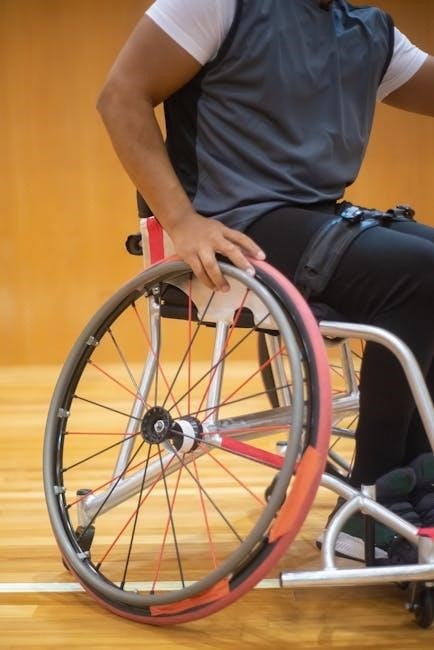
9.2 Video Demonstrations and Tutorials
Complement your PDF guides with video demonstrations showcasing proper form and technique. These tutorials cover exercises like thread-the-needle and thoracic spine mobilizations, ensuring you perform movements safely and effectively. Available on platforms such as YouTube and fitness websites, they provide visual guidance for both beginner and advanced routines. Videos are organized by muscle groups and mobility focuses, making it easy to follow along. They also include tips on progression and modifications, helping you adapt exercises to your fitness level. Enhance your learning experience and maximize results with these accessible resources.
9.3 Community Support and Forums
Join community support forums to connect with others enrolled in mobility training programs. These platforms allow you to share experiences, ask questions, and receive feedback from experts and peers. Engage in discussions about challenges, progress, and tips for maximizing your routine. Many forums also offer motivational support, helping you stay consistent with your program. Accessible online, these communities provide a space to troubleshoot techniques and celebrate milestones. Active participation fosters accountability and encouragement, ensuring you stay on track with your mobility goals. Valuable insights and shared knowledge enhance your overall training experience.